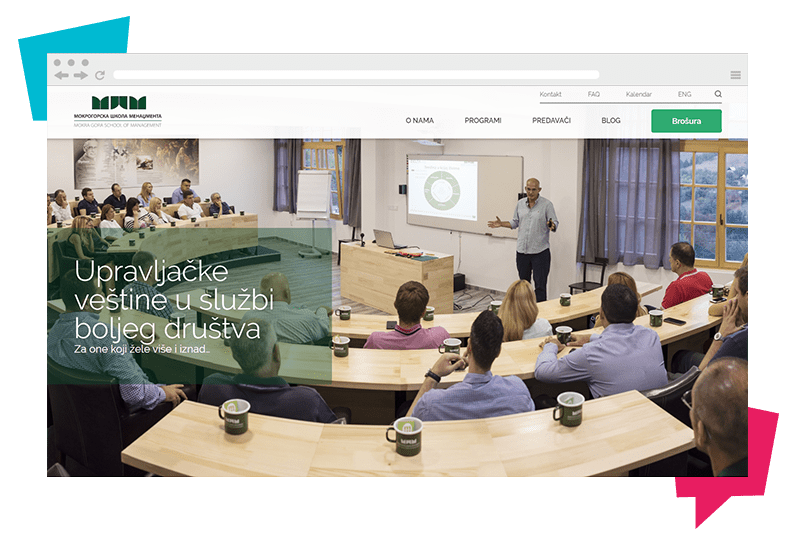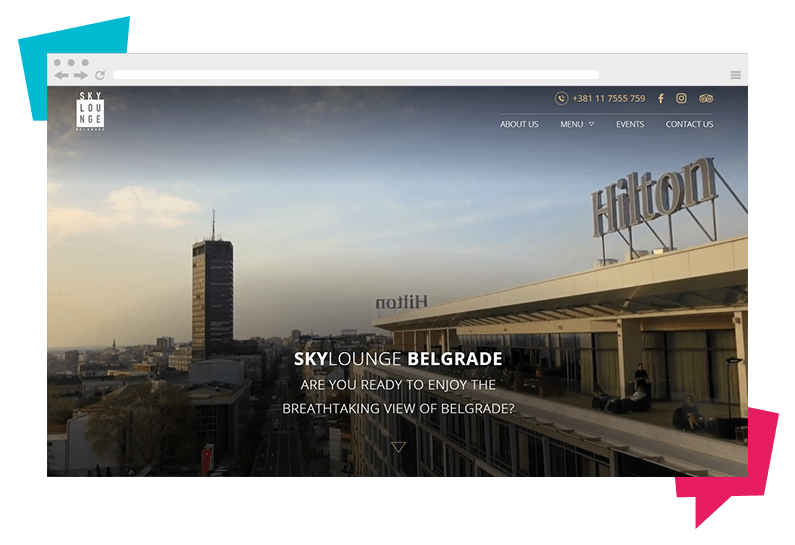How can a Website help you overcome the Crisis?
The crisis has struck us, and it’s still underway. We don’t know when it will be over, and it brought forward many things we weren’t prepared for. Nobody could predict this kind of scenario. Effects range from loss of human life, movement restrictions, production decline, and uncertainty, to guessing what awaits us in the aftermath of the crisis.
Apart from the human tragedy, the implications for businesses are severe. The shares around the globe took a massive blow, with some stock markets, either closing or recording their worst days in decades. Just take the example of Dow Jones Industrial Average, FTSE, and Nikkei. They all suffered sharp falls since the outbreak began in China last year, with Dow Jones dropping almost 3,000 points. All in all, global stocks have suffered a downturn of around 25% during what is now called the 2020 Stock Market Crash.
Many experts, including the Chairman of Federal Reserves, predict another period of recession, which will curb economic growth and market demand. Goldman Sachs warned US GDP might shrink by 24% in the next quarter of 2020. If the prediction materializes, it would be a drop 2.5 bigger than any other drop in the history of the country. Europe’s annual GDP growth, on the other hand, could decline by 5.6%. This is all seriously bad news for entrepreneurs and investors across industry sectors.
The winds of economic change and government response
One thing is for sure— nothing will be the same as it was before the crisis. We’re bound to operate in a different market, economy, and industry landscape, with diverse consumers as well. I’m not using the word “worse” deliberately. Namely, it’s not a foregone conclusion that the worsening of the business climate will be the only consequence of the crisis. Some industry sectors are enduring strong hits, while others pursue new growth and expansion opportunities. To be direct, everything will be significantly different from this point on.
And we already see many signs of this change. Central banks in countries like the UK and the US have reacted by cutting interest rates almost to zero (0.10% and 0.25% respectively). Such measures are expected to lessen the negative impact of the pandemic and stimulate economic activity. To be more precise, this decisive response is poised to encourage borrowing and reinforce spending habits, enabling businesses to sustain revenue streams.
Moreover, the US Senate has pumped $2 trillion into the economy by passing a historic aid bill. There’s little doubt many companies will go under, but at least some of them should get a new lease of life thanks to government measures. As for e-commerce, pharmaceutical, logistics/delivery, entertainment streaming, and similar businesses, they have little to worry
about. In fact, they are among the main winners profiting from increased demand for their products and services. HeloFresh delivery firm shares surged by 14.2% due to the expected revenue boost, which could amount to whooping 69%. Walmart has increased worker wages to welcome a spike in consumer demand. Sales of household supplies have quadruped for the Chinese e-commerce goliath JD.com.
A look back: revisiting old business lessons
Ten years ago, I started working in a commerce company. The main target audience segments were the handyman, electricians, and plumbers. My role was to develop an online store, where they could order all the material they required for their work. Back at the time, e-commerce was in its infancy, and even businesses that we typically associate with this sector nowadays didn’t have online shops set up.
In order to see our plan through, we had to overcome particular challenges, the chief one being prompting handymen to order everything they need online. These are the people who traditionally-speaking, get their tools and materials at brick-and-mortar stores and depots they are so used to visiting. The path to our ultimate goal wasn’t simple; we’re talking about the year 2009, after all. E-commerce was only gaining initial traction, and online shopping volume was meager.
After a few months, the regular orders came in, mainly due to our competitive prices offering. We didn’t have any labor, storage space, or business premises-related costs. In a matter of a year, we gained a steady influx of customers. The motivation behind online shopping was clear. In terms of prices, we were competitive, and later on, it turned out that free delivery to home address was one of the key factors driving orders.
To be clear, these were some bulky goods, so proper vehicles and workers for its transportation and handling were required. One of the situations I like to restate was when one handyman ordered a truck full of electric and plumbing equipment to the address of a property that he was working on. When we delivered everything, the man was utterly delighted because he didn’t have to worry about the logistics and transportation of goods to the site. He only brought his tools with him, and he was good to go right away.
Did you think about offering your products and services online? Well, in case you need support to pull this tactic off, contact us.
Internet as our saving grace
In times of crisis, the internet is one of the rare places where growth occurs.
Everyone in a position to adapt quickly has already done it or started deploying business solutions. This isn’t just an opportunity for those with big supply chains, but people who own small businesses— bakeries, flower shops, restaurants, fast-food venues, convenience stores, etc. They all try their best to save their companies and jobs and see the internet as salvation.
It’s evident to me that in the past few weeks, there has never been a more significant number of banners with the message “buy online”, “deliver to home address”, “ buy online safely”. Movement restrictions and the fear of the virus that is still raging have forced consumers to seek alternative avenues to products and services they need.
Online is that avenue, which more and more consumers choose, so everyone in the business world that is able should meet them there. Notice I didn’t say this is “the new” way, and that’s because it has been around for years. Nevertheless, for many consumers, it wasn’t as visible and essential as it is now.
What we’re witnessing in Serbia and the world at large is the process of market education. Many people are walking the “online path”. From the standpoint of a business owner, it’s necessary to recognize the needs of customers and adjust the supply accordingly, taking it online at the same time. In terms of selling goods, this isn’t an overly big challenge, considering that e-commerce isn’t a complex phenomenon in Serbia.
Not only that, but the sector is undergoing massive growth these days. There are a lot of ready-made solutions on the market, which can be tailored to the needs of most clients. If these needs are specific and call for advanced and particular functionalities (such as warehouse or SAP integration), then the best choice is a custom made solution that is entirely in line with the client demands.
- If you are an owner of a business that can’t sell products and services online, this is a chance to make the buying journey easier for consumers. For instance, provide an overview of free appointment slots, as well as scheduling features (this is great for hospitality, healthcare…).
- Feature additional information on products (for example, food’s nutritional value, instructions on how to assemble a wardrobe…)
- Engage in lead generation (education, insurance sector, automotive industry…)
The critical thing is to acknowledge the needs of your customers and to serve them adequately in the online environment.
The crisis is pushing businesses to digital solutions
Many traditional businesses that heavily rely on face-to-face sales processes have successfully adapted. Car dealerships are a prime illustration. They now have to cope with an imminent sales drop, which is the result of city lockdowns and dwindling spending power. They realized that the best way to go about transformation is via digital solutions (e-commerce platforms and services).
Likewise, numerous restaurants that closed their premises have launched delivery services for the first time in their history. They employ apps and websites to create digital menus and serve customers in new ways. Newspapers that canceled print editions have beefed up their digital operations. Powell Book independent bookstore rehired 100 workers because of the flood of new online orders. Yoga and fitness centers have decided to offer online classes to their members. It’s clear that the digitization of business processes presents a way to deal with and capitalize on the disruption Coronavirus pandemic is causing.
Learn from success stories
Let’s now examine a few examples of websites I worked on. They can serve as an inspiration to owners of various types of companies to adjust to a new situation and offer their products and services to customers in times of crisis, but also after it.
Mokra Gora School of Management is an organization that provides educational programs to different levels of management. They also organize very successful business events for many distinguished clients in Serbia and throughout the region.
On the landing page, we created the filter to direct potential clients to the program that is the right fit for them. The filter contains a few simple questions about the experience with management. Based on their answers, the users get recommendations for programs that suit them the most. This simplifies their research and also saves time.
You can read more about this site here.

Image 1: Mokra Gora School of Management website preview
In the SkyLounge bar, an extended and separately branded part of the Hilton Hospitality Company, an exclusive New Year’s Eve event was planned. The program, menu, and contemporary artists were selected with the roof space of the brand new hotel in mind. The space involved with modern architecture and a fantastic scenic view of the Slavia square and New Belgrade. The landing page was in the focal point of digital presentation, with a 360° view and a broad spectrum of different GDN, with Facebook and Instagram ads directing traffic toward it. We generated a total of 82 phone calls and 93 messages, which resulted in a sold-out event 10 days before the due date.
To find out more about this campaign, click here.

Image 2: SkyLounge bar landing page preview
Beauty, elegance, trust and high expertise have been guiding principles when we started working on the creation of the Genesis Beauty Center website. Bearing in mind the vast range of stunning and sophisticated cosmetic treatments, the most significant challenge was to showcase the diverse cosmetic services in the most approachable and, at the same time, highly attractive fashion for potential clients.
Discover more about this project here.

Image 3: Genesis Beauty Center website preview
The question arises what will happen once this crisis passes and the world returns to normality. Life will settle in regular ebb and flow, and people will go outside to grab a coffee with friends they haven’t seen in a while, go shopping, drop by their favorite restaurant, visit a grocery store in the neighborhood.
And what will for sure, remain after the crisis? Well, the more significant number of online shoppers than before the crisis. They will exhibit newly-formed habits of picking, choosing, recommending, and purchasing products online.
In case you need help with implementing new and improved websites in your digital strategy and gaining more engagement and sales, contact us.



